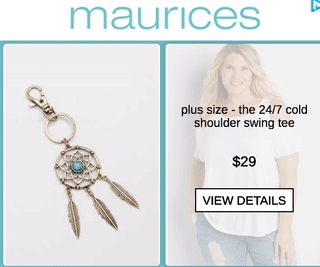You’ve probably heard the old adage, “If at first you don’t succeed, try again.” Well, that’s certainly true in marketing.
If your customers didn’t convert the first time they visited your site, then something about your messaging obviously didn’t work for them the first time around.
Fortunately, there’s a remarketing ad for that.
But here’s the thing, customers come across your site at all sorts of different points in the buying cycle. If they aren’t ready to buy today, hitting them up with the same messaging over and over won’t do any good. However, that doesn’t mean you can’t get them to buy in the future—if you set your remarketing ads up correctly.
Guide Your Customers Toward Conversion
It’s pretty apparent that most of the people who come to your website don’t convert. After all, on most sites, 98% of traffic leaves without converting.
If you’re currently only getting 2% of your potential buyers to convert, there’s certainly a lot of room for improvement in your marketing, right? I mean, why wouldn’t they convert? Who wouldn’t want what you have to offer?
To be honest—and this is going to sound like a bad reason for someone not dating you—they’re just not ready yet.
In fact, according to Hubspot, 96% of your traffic isn’t quite ready to buy the first time they visit your site.
So, if your page has a 2% conversion rate, you are converting half of the people who are willing to convert right now. When you think about it that way, a 2% conversion rate isn’t too shabby.
However, that still leaves 96% of your traffic that was interested enough to click, but not interested enough to convert. To snag that chunk of your traffic, you’re going to have to approach things differently.
Lead Them On… To The Next Step
Now, according to Mr. Einstein, “The definition of insanity is doing the same thing over and over and expecting different results.” This holds true for remarketing, too. No one wants to see the same message again, and again, and again, and again.
And again.
See? That was annoying, not effective.
If the messaging in your ads and landing page didn’t get people to convert the first time they came to your site, it’s probably not going to make them convert in a retargeting ad. They simply aren’t ready to buy yet.
For example, if you sell accounting software via paid search advertising, you might run ads encouraging people to get a free 30-day trial. When customers came through to your landing page, you might ask them to create an account so they can access your software. Of course, this page would also tell people everything good about your software.
That’s all well and good, but what if people don’t sign up for your free trial? Should you just keep pushing that at them?
Unfortunately, if it didn’t work the first time, the odds are that it won’t work the second…or third…or thirtieth (this is remarketing, after all). Instead, you need to change your messaging to match where they are at in your buyer’s journey and help them through their decision-making process.
Help Them Through Their Decision-Making Process
Any marketer who has done their homework has a pretty good idea of what their specific buyer journey looks like. Now, all you have to do is apply these insights to your retargeting ads.
Case in point, in the preceding example, if you know that people who express an interest in your accounting software who don’t convert are generally comparing different software options, asking them to try your free trial again isn’t going to be especially useful.
Remember, they’re not looking to convert, they’re looking to compare. So help them do that. For example, you might want to make a landing page that compares a range of software options. If your audience sees you creating value for them and saving them time, they’re more likely to pick your company.
After all, unlike the competition, you’re not trying to force them to buy your product — you’re trying to help them.
Make It Easy
“I’m looking for the most difficult solutions to my problems,” said no-one, ever. If you’re the easiest option for people to work with, you’re much more likely to get their business.
With that in mind, here are some easy ways to help people through their buyer journey. You’ll know which ones you should be doing to reach your goals depending on your market, company, and personal goals.
1. Address Typical Concerns
One of the biggest reasons why people don’t buy is because they just aren’t comfortable with your offer, product, or company yet. They could think that you’re asking for personal information, or that your product looks a little overpriced, or that testing out your product will take too much of their time.
So, if a significant portion of your audience that has a specific concern that is keeping them from converting, retarget them in a way that will address that concern.
For example, Wix does this in a cool way. Creating a website is a stressful hassle for most people, so Wix runs ads showing how easy their platform is to use:

This video does a great job of demonstrating how easy it is to set up your own website using Wix. As a result, people who are worried about the headache of site creation are going to be a lot more likely to sign up.
2. Offer Products That Go Together
Depending on what you’re selling, you may have a complementary product you can offer. Phones have protective covers, a set of silverware will need an organizer, and all sorts of things come with warranties now (even razors).
It might take some extra work, but figuring out what complementary products your customers might want can not only lead to more sales, it can also save your customers from having to buy more later.
As an added bonus (see what I did there?), if you offer a good bundle, it can make your business look like the easiest, simplest choice for your potential customers.
If you’re an eCommerce business, this is definitely a best practice. It can work well for other offers and products too, especially if you add in a discount with your complementary product. Maurices does this by showing an ad with various accessories that could be used with the product they want to be sold:

These kinds of ads are particularly useful because they can renew interest for customers who have visited your site without buying, and might even be more interested in your complementary options. On top of that, customers who already did make a purchase will see options for additional accessories which Maurices can then up-sell.
Grouping products is a great way to sweeten the deal for both you and your customers through retargeting.
3. Offer Discounts
A fundamental worry most people have is price. They’ll compare all sorts of options, looking for what suits them best. They may be willing to buy, but they want the best deal they can get.
Now, the price cut is a sales tactic that has been around forever, but it’s still around because…it works. Nothing motivates potential customers like a good deal.
If you think price is a major concern for your audience, putting together a discount or even a promotional price could help those who are worried about converting to actually get excited by your service or product.
To make this tactic even better, try adding in some urgency. This Cabela’s ad does a great job of that:

This ad offers a nice discount and it’s one that won’t last forever. As a result, Cabela’s customers have to act soon if they want a good deal.
4. Utilize Buying Cycles
For this last retargeting method, remember that your customers still have potential to buy again. Your customers trusted your business enough to buy from you once, so they are a fantastic retargeting opportunity.
To do this effectively, you’ll need to know the overall timeline of your business cycle. Depending on your buying cycle, people might be willing to buy more from you soon, or you might want to wait a while before suggesting it.
Back to our accounting software example. If you know that your customers tend to get a subscription upgrade after around four months, it might not be a bad idea to launch remarketing ads discussing the advantages of upgrading three months after a new client signs up.
Doing this will take your retargeting to the level you need to really get the most out of your online advertising.
Conclusion
Retargeting has been a central part of online advertising for decades. It opens the door to many more conversions than you can get without it. After all, “if at first you don’t succeed, try again”, right?
Well, trying again can be great, but if you don’t do it right, it can also be insanity.
Just because someone came to your site, that doesn’t mean that they are ready to convert. If they bailed without converting, there’s probably a reason. Your retargeting ads need to address that reason and guide your customers along the path to conversion.
What do you think of these strategies? Have you tried any? Have you ever seen any ineffective retargeting ads?



